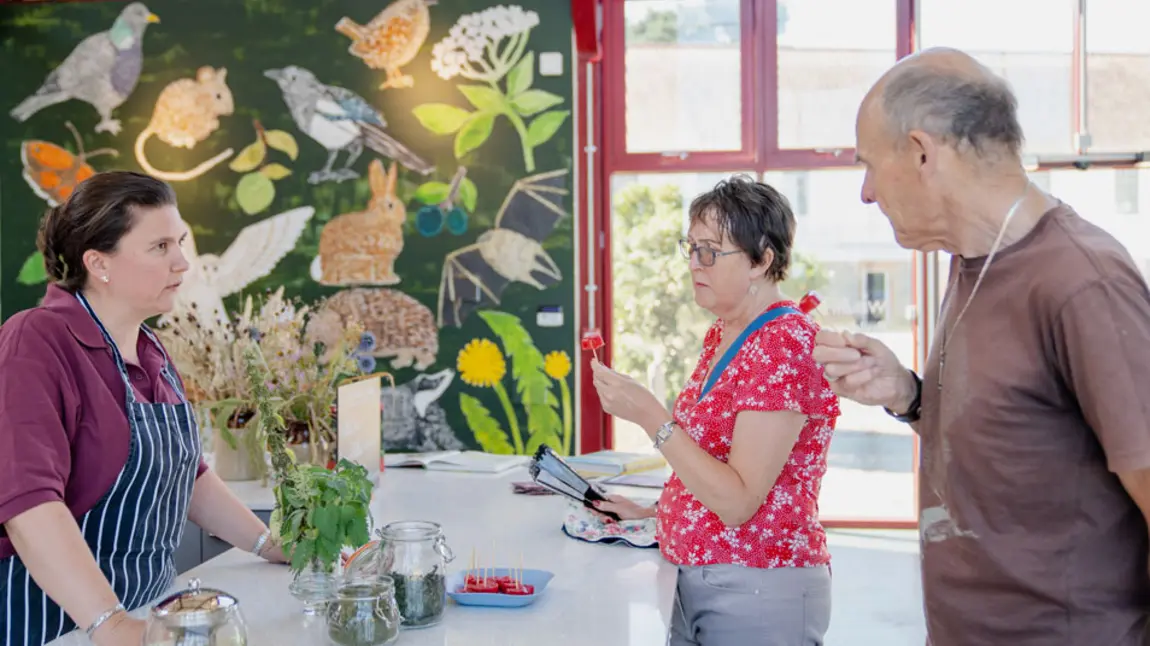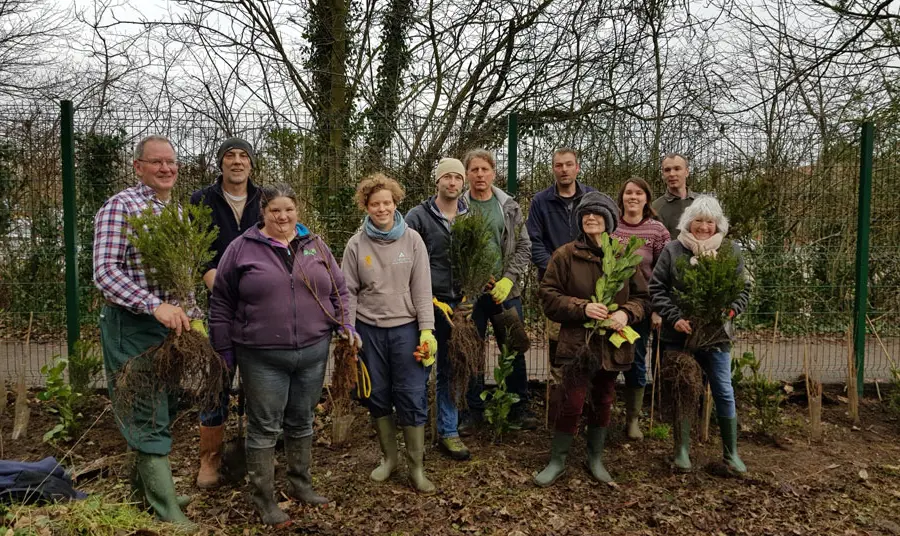Case study: The Food Museum – Hedgerow

The ambition
The Hedgerow project by The Food Museum celebrated one of our most recognisable habitats, and helped share ways to create and manage these environments that support nature.
Jenny Cousins, Director of The Food Museum explains that over the past few decades, many hedgerows have been destroyed – either completely removed due to changes in farming practices, or severely managed, reducing their ability to provide food and shelter to wildlife.
Hedgerow aimed to raise awareness of the importance of hedges as habitats and sources of food through a co-curated exhibition with indoor displays and outdoor demonstrations.
Activities included planting over a mile of hedging on the museum’s estate and training sessions in the traditional craft of hedge-laying. As a food museum, it also held daily tastings of hedgerow recipes aiming to connect people to food sources.
The organisation
Nature is deep in our consciousness as an organisation, and one of our key drivers is to raise awareness of how food and biodiversity are interlinked.
Jenny Cousins, Director, The Food Museum
The museum estate comprises of 84 acres of land, which include 46 community allotments and a new, accessible sculpture trail along the river Rattlesden.
Jenny says: “Being a museum we have an important role to play as an educator, but we are also a landowner. Nature is deep in our consciousness as an organisation, and one of our key drivers is to raise awareness of how food and biodiversity are interlinked.”
The funding
Hedgerow was funded by a £100,000 grant from the Arts Council.
It was also funded by the New Anglia Local Enterprise Partnership for Norfolk and Suffolk with £100,000 and ScottishPower Foundation funding of £120,000.
The results
Hedgerow demonstrated how different professions could come together to address biodiversity loss. The exhibition brought together artists, policymakers, farmers and historians.
Through professionally-led training, people developed new skills in traditional hedge management practices which are beneficial to a variety of plants and animals.
Alongside the main ‘Hedgerow’ exhibition, the museum delivered a co-curated community exhibition with the local Eco Futures group to show how valuable gardens are in creating habitats to help increase biodiversity.
Workshops and tasting sessions shared sustainable and seasonal recipes.
Advocating for Hedgerow Heroes
The museum also supported CPRE The Countryside Charity in its campaign, 40 by 50. This called on the government to raise its target to increase hedgerow networks by 40% by 2050 – a pledge that was successfully secured.
The museum took a small version of its exhibition into Parliament to encourage MPs to sign up as Hedgerow Heroes.
The award
Hedgerow was announced as Sustainable Project of the Year joint winner at the Museums + Heritage Awards on 11 May, sharing first place with SS Great Britain Trust.
The Food Museum impressed judges with its commitment to environmental sustainability, which was embedded in every aspect. It delivered exhibitions with low environmental impact by reusing display boards and printing text on seed paper. The exhibition signage will be planted later, reducing waste and supporting biodiversity.
The future
The museum plans to keep delivering hedge-laying training on its estate to increase skills development.
It will also continue to work with local community groups, providing allotments, soil and seeds to enable them to grow plants, flowers and vegetables.
Speaking about the impact of the project, Jenny says: “As an organisation, we will keep using the skills we learned during the project to manage our own estate more effectively for biodiversity.”
The museum is continuing its environmental theme in its new exhibition ‘Meat the Future’ which addresses the issue of livestock farming and sustainability.
Top tips
- Consider biodiversity loss in your work. It’s important, particularly in the UK which is ranked one of the most nature-depleted countries in the world. Can you help raise awareness of this issue? Are there things you could change about your own estate management?
- Remember the importance of local – think about what you can achieve in your context.
- If you’re a museum, keep in mind your public role as an educator. How can you empower others to support biodiversity growth?



